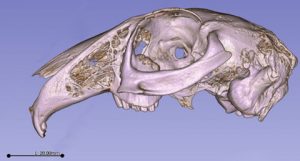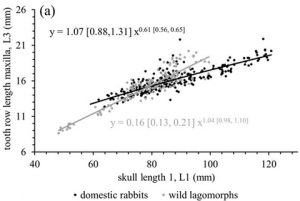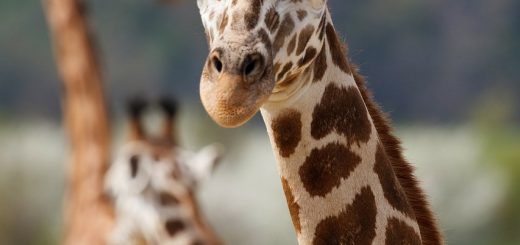Show me your teeth and I’ll tell you … how big you are?
 In 1975, biologist Gould found for various mammalian taxa that cheek tooth occlusal area scales with body mass by a factor of 0.75; i.e., in smaller animals, the occlusal surface is relatively larger, while in large animals it is relatively smaller. This ratio is similar to the surface rule in relation to metabolism. Consequently, the specific metabolic rate increases as the animal’s body size decreases.
In 1975, biologist Gould found for various mammalian taxa that cheek tooth occlusal area scales with body mass by a factor of 0.75; i.e., in smaller animals, the occlusal surface is relatively larger, while in large animals it is relatively smaller. This ratio is similar to the surface rule in relation to metabolism. Consequently, the specific metabolic rate increases as the animal’s body size decreases.
However, it appears that the cheek tooth occlusal area also depends on other factors, meaning that the ratio is not a universal rule and cannot be applied to all taxa without difficulty. In our current study (Fasciati et al. 2025 The Anatomical Record), Prof. Dr. Christine Böhmer (CAU Kiel) and colleagues from the Vetsuisse Faculty of the University of Zurich in Switzerland took a closer look at the ratio between the length of the tooth row and the length of the cranium and the mandible in a large number of domestic rabbits (N=302). The measurements were compared with data on wild hares and rabbits from the literature (N=198).
The results show that smaller domestic rabbits have a relatively longer tooth row. Although a similar allometric trend was also observed in some wild hare and rabbit species, the length of the tooth row scales isometrically with body size when comparing different species. The extent to which the relatively long tooth rows in domestic rabbits contribute to dental pathologies needs to be investigated in future studies.

Reference:
Fasciati UL, Böhmer C, Ohlerth S and Clauss M (2025) Tooth row allometry in domestic rabbits and nondomestic lagomorphs: Evidence for a decoupling of body and tooth row size changes in evolutionary time. The Anatomical Record DOI: 10.1002/ar.70029




Neueste Kommentare